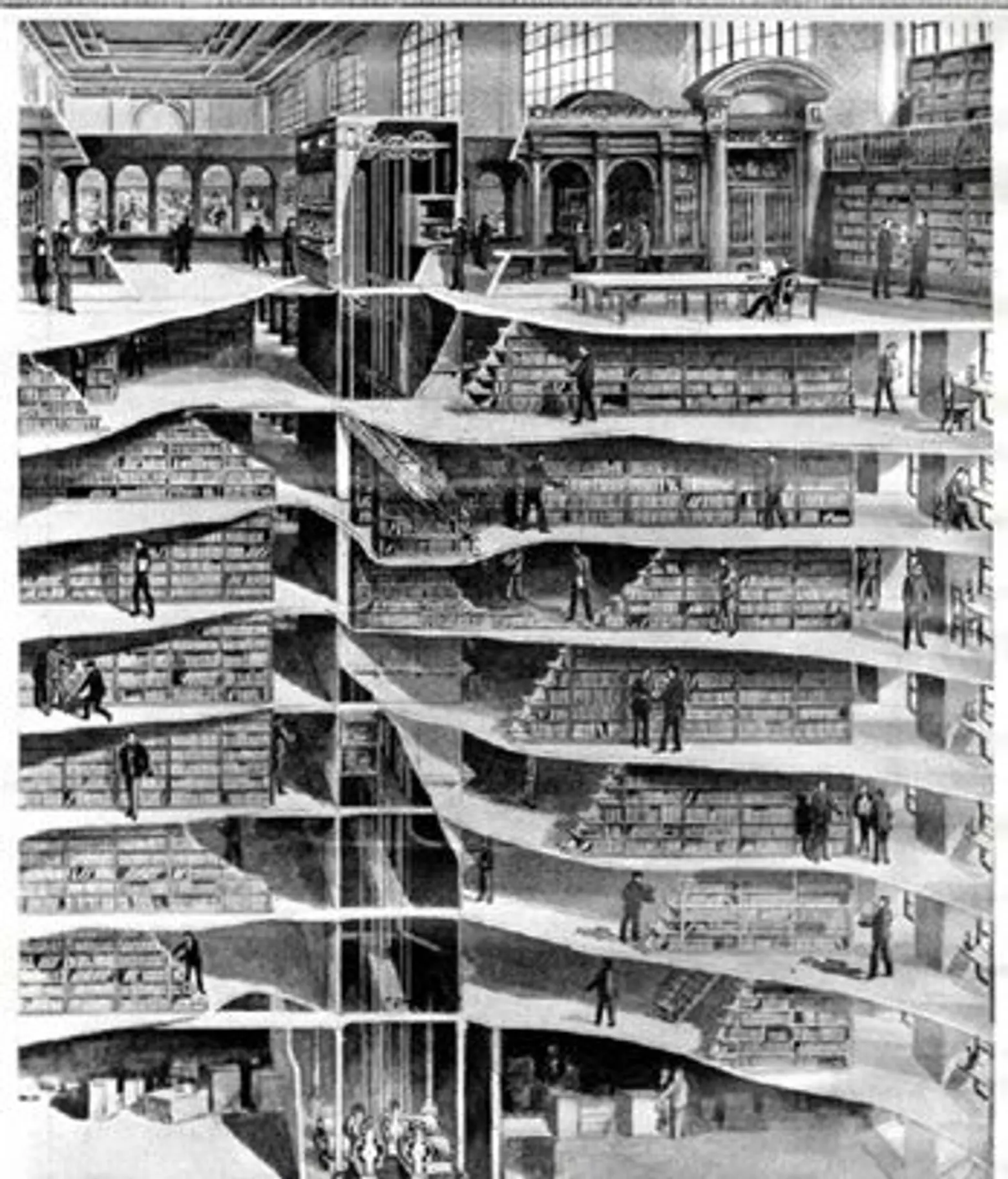The flagship New York Public Library shelves books by size, not subject matter

Image by timetrax23
With over four million research books in their possession, finding a place for each and every title has been an ongoing challenge for the New York Public Library (NYPL). First starchitect Norman Foster was brought in to help remedy the issue, but his plans for expansion were dropped when researchers realized a redesign would mean moving 1.5 million books to Jersey for an undefined amount of time; and more recently, the library unveiled a brand new $23M storage facility below Bryant Park, complete with a $2.3M “Book Train” able to zip miles of volumes across the library’s 11 floors. But even with this new facility, space remains a challenge. So in hopes of increasing capacity, the NYPL has decided to abandon the Dewey Decimal System for a more space-friendly cataloging system. Yes, when it comes to sorting, subject is no longer of interest—rather, it’s size that matters.
 Image by NYPL via Quartz
Image by NYPL via Quartz
According to Quartz, to optimize all available shelf space, including what’s immediately above and below a book, volumes are now being sorted using a “book sizing template,” a measure which determines, based solely on physical dimensions, where a title should go. As writer Anne Quito explains, “This means that Religion and Innovation: Antagonists or Partners? which measures roughly 6 x 9 in. would be placed next to the recipe book Oyster: A Gastronomic History which measures 7 x 9 in.” Every other detail is considered moot.

As you might guess, managing such a sizable collection based on something so seemingly arbitrary can get complicated, and as such, the NYPL is relying on a barcode system to help them locate titles. Each code keeps record of all the basics that you’d normally find in a card catalogue, plus the book’s exact coordinates in the stacks. Each volume is also cross-referenced and tagged across several standardized classification systems (eg. ISBN and Library of Congress number) on top of that. So far the NYPL has converted the second level of its underground stacks, and it will continue to expand its efforts to other floors.
What is somewhat surprising, however, is that this system of sorting is not uncommon. In fact, Columbia University is cited as another institution using this method. And quite notably, the school has increased its storage capacity by 40 percent as a result.
[Via Quartz]
RELATED:
































